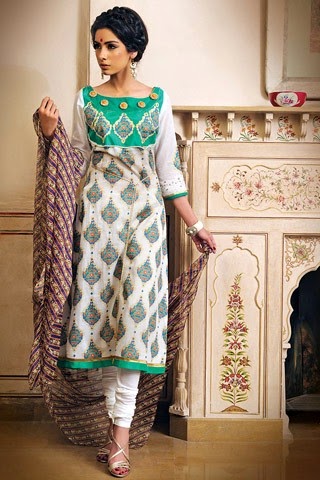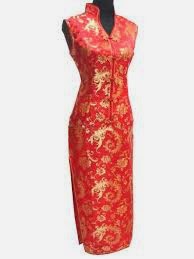The baju kurung is a traditional Malay costume which loosely translated as "enclosed dress". The early baju kurung was longer and looser, unsuited to the figure of Malay women. It was popularised in the late 19th century by Sultan Abu Bakar of Johor.
Although baju kurung is the name for the attire for both male and female, in Malaysia, the female dress is referred to as baju kurung, while the male dress is referred to as baju melayu.
Two versions of the costumes are popular. One is the baju kurung teluk belanga and the other is the baju kurung cekak musang. The main difference between this two fashion styles is the cutting style at the neck, where the teluk belanga style has no collar and the neckline is stitched in the style known as tulang belut ("eel's spines or bones"). The baju kurung teluk belanga originated, as its name implies, from Teluk Belanga, in the island of Singapore, which was previously the capital of the state of Johor. On the other hand the cekak musang style has a standing collar with holes for five buttons including two buttons for the collar.
Baju kurung teluk belanga
Baju kurung cekak musang
Baju kurung for men
The cekak musang shirt also normally has three pockets – two at the bottom, and one at the upper left breast. The teluk belanga shirt normally has only two pockets both at the bottom. The baju melayu is a loosely fitting shirt with long sleeves, worn with long pants with a sampin which is wrapped around the middle of the body from the stomach to the knee and sometimes lower. This sampin is usually a three-quarter length or full sarong-style cloth made of kain songket, tenun pahang diraja or other woven materials with traditional patterns.
Baju kurung for women
A baju kurung is a loose-fitting full length dress, consisting of a skirt and a blouse. The skirt is made from a long cloth with foldings on one side; the blouse is collarless, has long sleeves, and extends to between the hips and knees. It is sometimes made of silk, imported from Japan, South Korea, Turkey or India, or from the Malaysian states of Terengganu or Kelantan. The modern baju kurung commonly uses lively colors and geometric patterns.
Traditionalists prefer fabric from peninsular Malaysia's eastern states of Terengganu and Kelantan, where the culture of batik and other hand-designed fabrics is still strong.
A woman will often wear a baju kurung with a headscarf (a tudung) in the more conservative states in northern Malaysia.
By,
Chow Zhilin






















